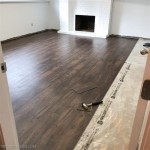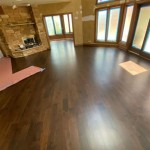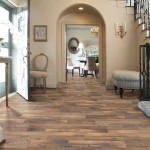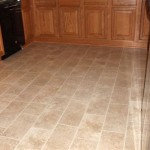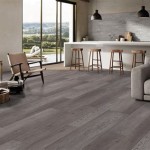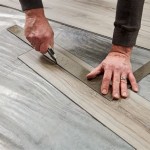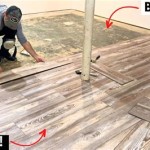Does Vinyl Plank Flooring Shift? Causes and Prevention
Vinyl plank flooring has gained immense popularity for its durability, affordability, and stylish appearance. However, one concern that often arises is whether vinyl plank flooring can shift or move over time. While it's true that some movement can occur, the extent and likelihood of shifting depend on several factors, and there are steps you can take to minimize these risks.
Causes of Vinyl Plank Flooring Shifting
Understanding why vinyl plank flooring might shift is crucial for addressing the issue effectively. Here are some common causes:
1. Inadequate Subfloor Preparation
A solid and level subfloor is the foundation for any flooring installation, including vinyl plank flooring. An uneven or poorly prepared subfloor can lead to shifting and movement. Cracks, gaps, and significant variations in height can all contribute to instability.
2. Insufficient Acclimation
Vinyl plank flooring is a material that expands and contracts with changes in temperature and humidity. Before installation, it's essential to acclimate the planks to the room's environment. Failure to acclimate can result in expansion or contraction that causes movement and gaps between planks.
3. Improper Installation
The installation process plays a critical role in preventing shifting. Incorrectly cutting planks, using the wrong adhesive or fasteners, or failing to follow manufacturer's instructions can all lead to instability and movement.
4. Excessive Moisture
Vinyl plank flooring is generally considered waterproof, but excessive moisture can still cause problems. Exposure to standing water, leaks, or high humidity levels can lead to warping, buckling, and shifting.
5. Foot Traffic and Weight Distribution
Heavy foot traffic and uneven weight distribution can also contribute to floor movement, especially in areas with high traffic. Consistent pressure on certain points can cause planks to shift or buckle.
Preventing Vinyl Plank Flooring Shifting
Fortunately, there are several steps you can take to prevent shifting and ensure the longevity of your vinyl plank flooring:
1. Prepare the Subfloor Thoroughly
Before installation, ensure the subfloor is level, solid, and free from any defects. This might involve patching cracks, filling gaps, or using a self-leveling compound to create a smooth surface.
2. Acclimate the Flooring Properly
Allow the vinyl plank flooring to acclimate to the room's temperature and humidity for several days before installation. This gives the planks time to adjust to the environment and minimize expansion or contraction after installation.
3. Follow Manufacturer's Instructions
Each brand of vinyl plank flooring has specific installation instructions. It's crucial to carefully follow these instructions, including the use of appropriate adhesive, fasteners, and cutting techniques.
4. Control Moisture Levels
Ensure the room is well-ventilated and take steps to prevent moisture buildup. Address any leaks promptly and consider using a moisture barrier if necessary.
5. Maintain a Stable Temperature
While vinyl plank flooring is generally resistant to temperature fluctuations, maintaining a consistent temperature in the room can further minimize expansion and contraction, reducing the likelihood of shifting.
Addressing Existing Shifting
If you notice shifting or movement in your vinyl plank flooring, it's important to address the issue as soon as possible. This might involve removing and reinstalling the affected planks, using a suitable adhesive or fasteners, or adjusting the subfloor. It's essential to consult with a professional flooring installer to determine the best course of action for your specific situation.
While vinyl plank flooring can experience some shifting, it's a durable and attractive flooring option. Taking precautionary measures and addressing any issues promptly can help ensure your flooring remains stable and beautiful for years to come.

Determining The Direction To Lay Install Hardwood Laminate Or Luxury Vinyl Plank Flooring

Reasons Behind Vinyl Plank Flooring Cupping And Buckling An Cuong

Dos And Don Ts For Installing Vinyl Plank Floors In The Bathroom Advice Homeowners

Diffe Wood Floor Transitions Expert Advice

Install Vinyl Plank From A Hallway Into Room No Transition Strip

10 Beginner Mistakes Installing Vinyl Plank Flooring

How To Repair Luxury Vinyl Plank Flooring The Palette Muse

A Beginner S Guide To Installing Vinyl Plank Flooring Dumpsters Com

Your Complete Guide To Flooring Transition Strips Builddirect

Proof That It S Possible To Match Lvp Your Hardwood Floors
See Also

